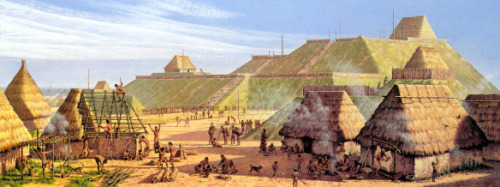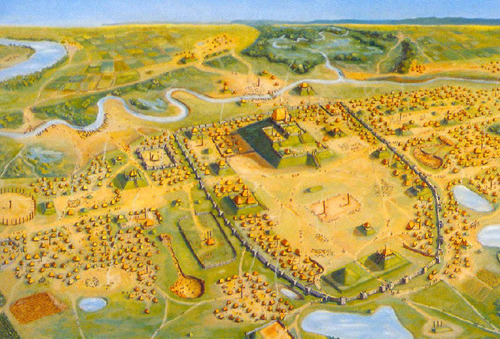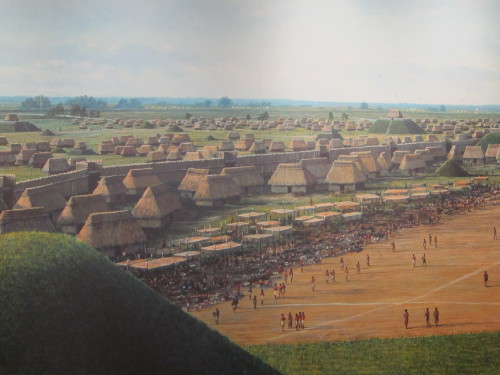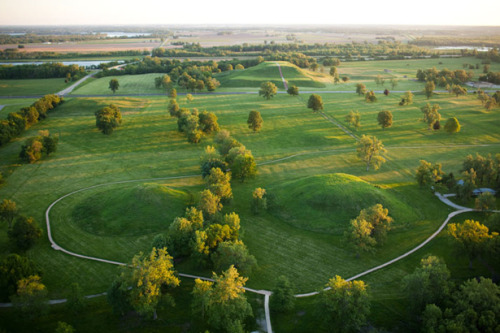America’s Lost City — Cahokia and the Mound BuildersLong before Europeans first explored
America’s Lost City — Cahokia and the Mound BuildersLong before Europeans first explored and settled the new world, what is now the United States was a host to a wide variety of rich, sophisticated, and vibrant cultures. One of the most interesting were the Mississippian Mound builders, a culture that stretched from Illinois and Indiana, throughout the Mississippi River region, and as far south as the Gulf Coast. Unlike most native cultures of the US and Canada, the Mississippians were unique in that they developed a society governed by centralized authority (a king or chief), built large cities and population centers, and conducted large scale engineering and agriculture. The center of Mississippian culture revolves around mound building. Usually the center of a Mississippian town or city was a large earthwork pyramid or platform which served as a religious and governmental center. Of all Mississippian population centers, the largest was a city called Cahokia, located in southern Illinois across the Mississippi River from St. Louis, MI. Settled around 600 AD, the city covered 6 square miles and featured 120 mounds of various sizes and shapes. The largest is “Monks Mound”, a large terraced earthwork 100 feet high and with a base similar in size to the Great Pyramid of Giza (13.1 acres). At its height around 1200 AD, Cahokia is estimated to have had a population of around 40,000 making it one of the largest cities in the world. At that time Cahokia was comparable in population to London (40,000) and Venice (45,000), while Rome (20,000) was significantly smaller.Like Ancient Rome, Cahokia is special in that all roads, or perhaps I should say rivers, led to it. From 900 to 1200 AD Cahokia served as a primary trading center in what is now the United States. As a result Cahokian trade goods can be found all over the Central United States. Some of the most popular goods traded were metal goods, as Cahokia was one of the few cultures north of Meso-America to practice the art and science of metal working. Most Cahokian metal work consists of copper items, many of which show incredible artistry and craftsmanship. The decline of Cahokia began around 1,300. Historians cite a number of reasons for the decline, including climate change, the use of unsustainable agricultural methods, poor waste disposal systems, political instability, famine, disease, and warfare. As Cahokia declined so too did the culture of the Mississippian mound builders. By the time Columbus “discovered” America, the city was abandoned. The Mississippian culture itself broke down, its people forming the many tribes that inhabit the south such as the Alabama, Apalachee, Caddo, Cherokee, Chickasaw, Choctaw, Muscogee, Creek, Guale, Hitchiti, Houma, Kansa, Missouria, Mobilian, Natchez, Osage, Quapaw, Seminole, Tunica-Biloxi,Yamasee, and Yuchi.Today Cahokia is a National Historic Landmark, Illinois State Historic Site, and one of 21 UN World Heritage Sites in the United States. -- source link
Tumblr Blog : peashooter85.tumblr.com
#history#mississippian culture#native american#cahokia#civilization#american history#precolumbian#mississippi#illinois#historic sites#monuments#mound builders#ancient history



